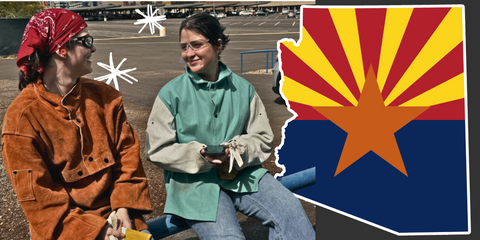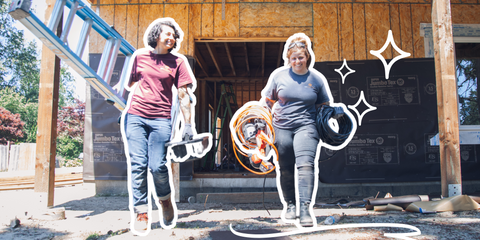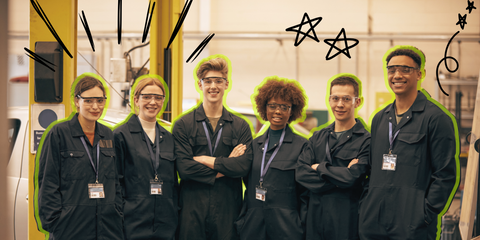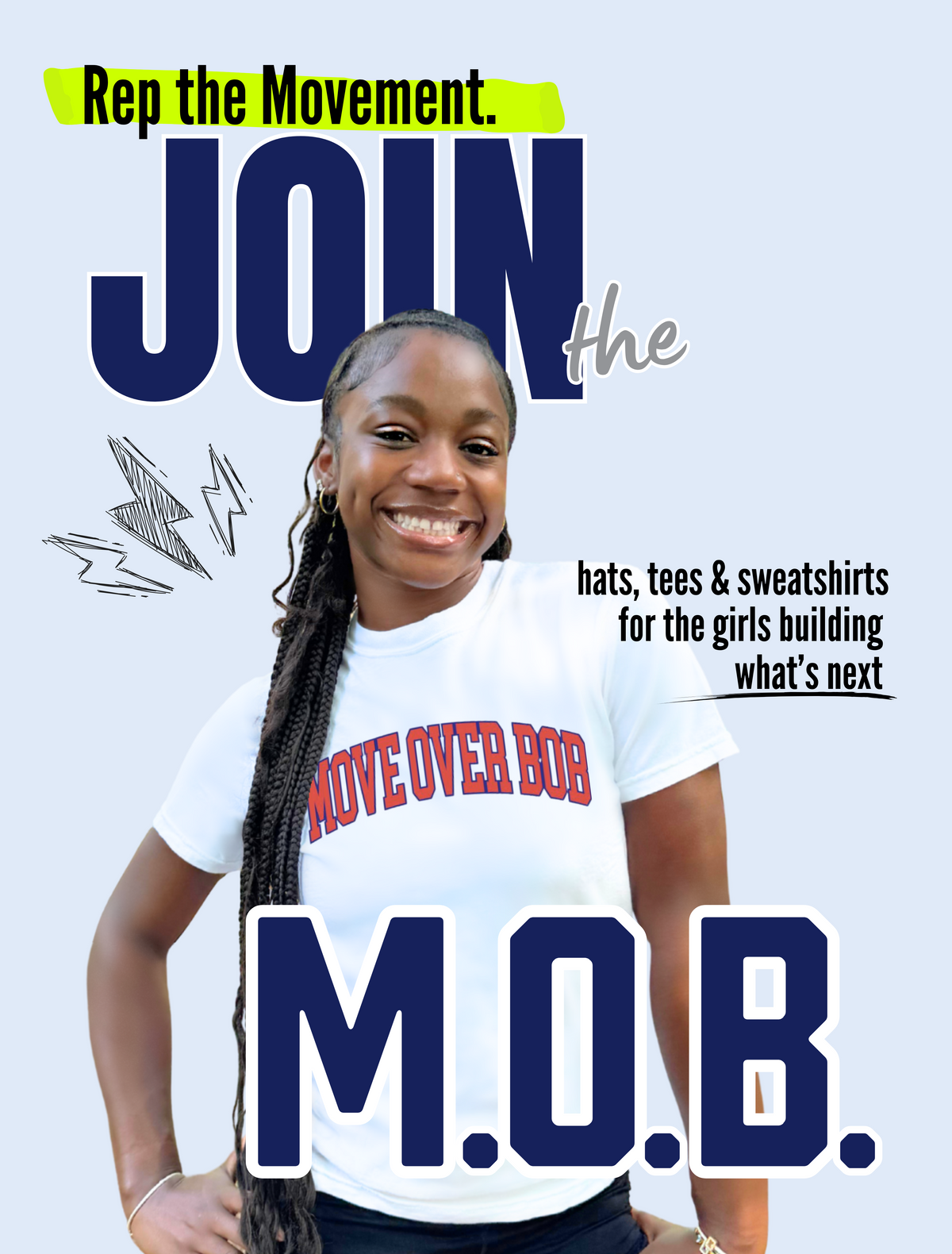FROM EARLY DAYS IN THE NETHERLANDS.
A balmy, spring day is no match for the warmth that radiates from Tim. She has a twinkle in her eye that hints at a lifetime of adventures, a laugh that engulfs the room and a presence which is undeniably unique. Her life has been one of unconvention, where she has pushed boundaries and marched to the beat of her own drum. It’s been a life of helping, building, sacrificing and fighting along with the underdog. There are few that will leave a mark on the world, such as Tim has.
This is but a tiny insight, into an extraordinary woman.

Born and raised in The Netherlands, Tim’s itchy feet began at the tender age of 18. She set off from her homeland to travel Europe, working seasonally for farmers across the continent. When she wasn’t farming, she was performing; busking as a street clown everywhere from Spain all the way down to North Africa.

In Belgium, she worked for a traveling exhibition called White on Black, an educational, two and a half hour walk-through demonstration which challenged racist prejudices. Her job was to make the space suitable for the exhibition and it was here that she found she particularly enjoyed joinery. After initially volunteering, she was asked to stay on as an employee, and this was her first taste of doing physical work in a professional capacity. She was eventually promoted to foreman, and led an international team of people, who worked alongside each other with no common language between them. She set up the exhibition four times across different cities in Europe, which provided her the funds to pursue her true passion, volunteering.
TO LEAVING HER MARK ON THE WORLD

Volunteering, for Tim, was something of a calling. A chance to feel useful, to get to know a country from the inside and to do something meaningful with her years. In 1989 she came to Northern Ireland to volunteer in a cross-community children’s holiday project. Between sharpening her practical skills, building playgrounds and making friends, her roots began to ground into the country that she would eventually call home. It was here that she would find paid jobs (including being the very first recycling officer in Northern Ireland!) so that she could fund her volunteering trips abroad.
HEY MAESTRO!
By 1994, the Balkan war between Croatia, Serbia and Bosnia was reaching the height of devastation. Her skills were called upon, for what would initially be a 3-week volunteer social reconstruction project. She would find herself based in a UN protected ceasefire area, a town called Pakrac. The goal of this project was to work alongside the civilians who remained, to rebuild their extensively damaged homes. The belief was that if you didn’t have a roof over your head, then how could you begin to mend other areas of your life.

She worked alongside the local authorities and a working brigade made up of almost entirely women. The men of Pakrac were either away at war or too unfit to build houses, and so a ratio of 20 women to 1 man prevailed. The situation was dire. Homes were destroyed from bombs and grenades, people were living in their garden sheds and many had no access to essentials such as clean water. And so the work began. Tim was in charge of coordinating volunteers and organising materials. With the aid of $500,000 of UN funding, materials were purchased to rebuild the carcasses of over 21 houses.

People in Croatia take a lot of pride in building their own homes, and this was upheld throughout the project. It was very much a community collaboration, where volunteers would assist but it was the locals who still upheld the dignity of finishing their homes themselves. The local custom is to get an expert in for assistance, such as a roofer or an engineer, who would be called ‘The Maestro’. Before long, Tim found people shouting across the street “Hey Maestro!”; her skills and contributions were being recognized cross-culturally.
THE VOLUNTEER BECOMES THE STUDENT.
By 1995, Tim unexpectedly became pregnant, whilst living in this ceasefire zone. “I realized I needed to go and settle down somewhere and I couldn’t think of a nicer place than Northern Ireland to raise a child in. I found myself not raising the child with his dad, so I was by myself.” Like every challenge she had faced before this, Tim rose to the occasion. She began taking on various repair jobs and eventually set up a small furniture restoring business in Belfast. Having an innate ability to turn one man’s trash into another's treasure, she dug through skips, rescuing forgotten items and restoring them to sell. For the first time in her life, it struck her that perhaps she could get a proper qualification in joinery, a skill she had come to enjoy so greatly. And so, at 30 years old, she became a student in a classroom full of 17-year old boys. “They all had no experience or idea for how to relate to me in any shape or form. I was the wrong age, the wrong sex, a foreigner, and I’m a bit wacky” she laughs. “I chose joinery because it appealed to me, I had a bit of an aptitude for it. I like wood as a material, I’ve never been interested in metal or mechanics. It’s also not that physically demanding, unlike being a bricklayer or plasterer. Joiners tend to be a bit smaller and more agile”.
The next challenge was getting her first placement. In theory, it should have been straightforward considering Northern Ireland was going through a building boom. “Nobody else in the class had difficulty getting a placement, but I had to phone 81 people before someone would give me a chance”. The problem wasn’t directly that she was a woman, it was more so they had no experience of ever having a female on a building site. Issues like having no female toilets meant that employers were hesitant to hire her. After the wife of a local business owner put pressure on her husband, they took Tim on and she became one of just three female joiners in the entire country. She spent the next decade working on building sites and to this day remains, for many of the men, the only woman they had ever worked with. However, she says that things are changing, and today you’ll see more and more women entering the construction industry.
Following on from this, Tim decided to work for herself. She went self-employed, focusing on partnering with estate agents to take care of their repair work. Alongside this, she also taught at the Women’s Tech, teaching joinery, woodwork and DIY classes. “Whether going to study or to the building site, it takes a bit of an inner confidence in yourself. I think it would be tougher if you were younger. In saying that, the rest of the squad did appreciate having me there. My presence wasn’t a bad thing, it added something different. Looking back, I would follow the same path”.

Always the leader, Tim has carved her own path. Doing not what society says she should, but instead what feels right. Never allowing her gender to be a hindrance, she has dedicated much of her life to seeing others live a better one. Whether she’s building houses, projects or simply lifting others up, her unwavering dedication to supporting others is a superb example of the human spirit.








